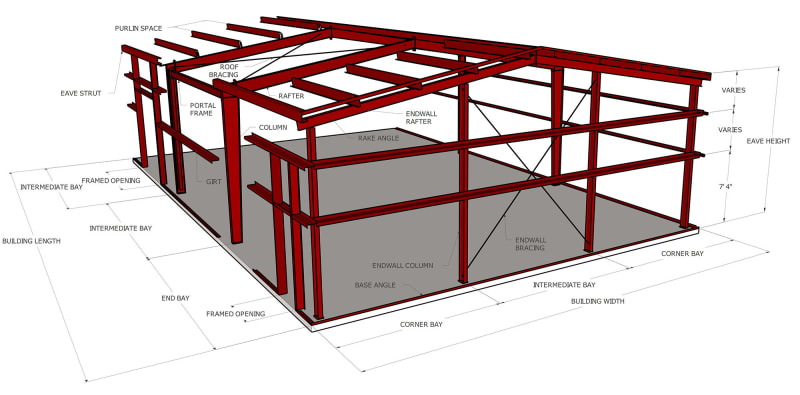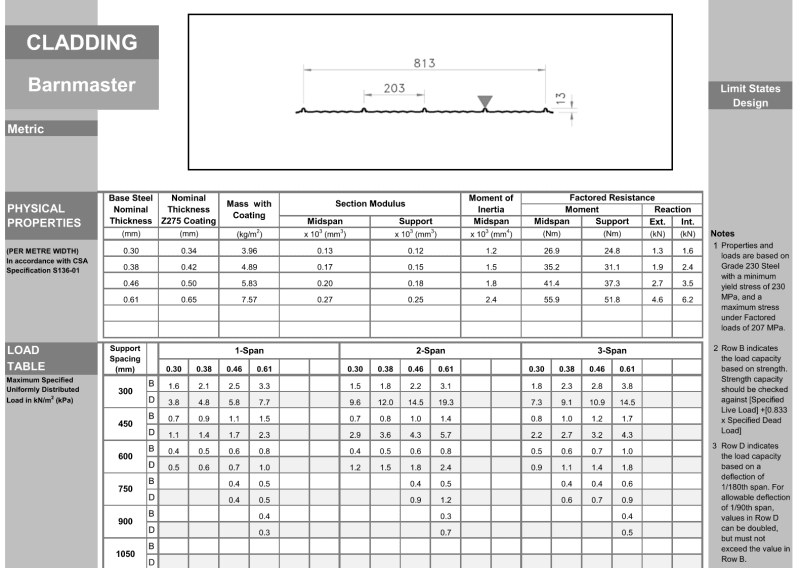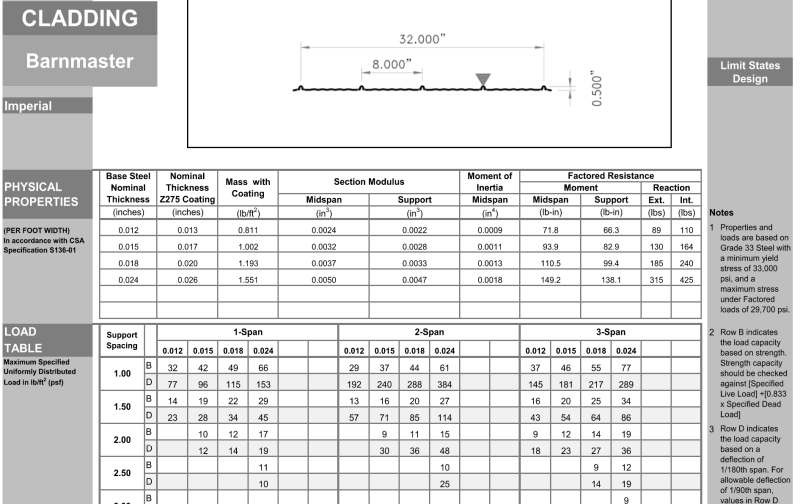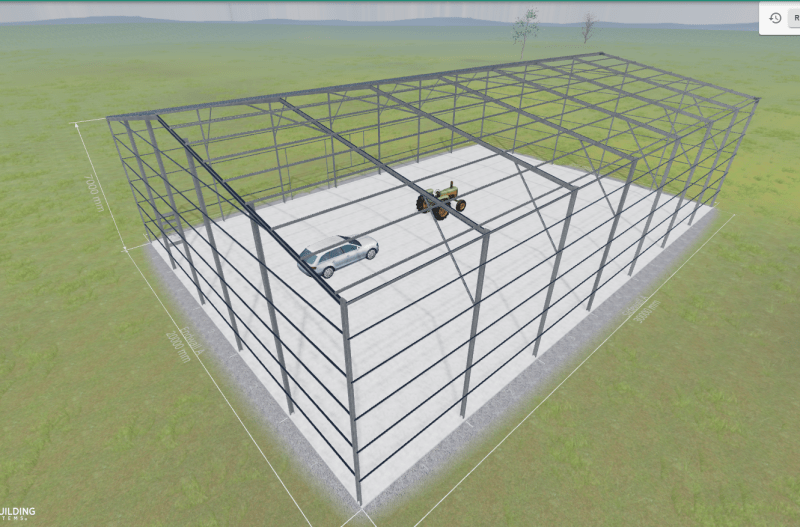human909
Structural
- Mar 19, 2018
- 1,998
Hi all,
If you have any good references for the behaviour thin sheet (~0.4mm) cladding behaviour for roof/wall diaphragms I'm interest in advice or links. Thanks in advance.![[2thumbsup] [2thumbsup] [2thumbsup]](/data/assets/smilies/2thumbsup.gif)
(In general I don't consider such cladding as part of my structural load path in my designs. But in reality it does add some stiffness and strength.)
Example structure:

For some background:
I've been tasked with rectifying an particularly under engineered and poorly constructed. "PEMB". I use punctuation around PEMB as in my locality such terminology doesn't really exist but this particularly structure does fit roughly in the North American style of PEMB. This 'shed' is a 20m wide, 7m tall portal frame. It is in Australia and built in a style typical to local construction and to above image, except the columns and rafters are cold formed members rather than hot rolled. It is running at around 2.5 understrength and it's deflection crazy if you don't account for the cladding.
I have free reign to amend the design as appropriate, which could mean conservatively ignoring the influence of the sheeting. But I am curious on what other engineers here are doing and what resources they are using when considering the stiffness and strength of thin cladding.
If you have any good references for the behaviour thin sheet (~0.4mm) cladding behaviour for roof/wall diaphragms I'm interest in advice or links. Thanks in advance.
![[2thumbsup] [2thumbsup] [2thumbsup]](/data/assets/smilies/2thumbsup.gif)
(In general I don't consider such cladding as part of my structural load path in my designs. But in reality it does add some stiffness and strength.)
Example structure:

For some background:
I've been tasked with rectifying an particularly under engineered and poorly constructed. "PEMB". I use punctuation around PEMB as in my locality such terminology doesn't really exist but this particularly structure does fit roughly in the North American style of PEMB. This 'shed' is a 20m wide, 7m tall portal frame. It is in Australia and built in a style typical to local construction and to above image, except the columns and rafters are cold formed members rather than hot rolled. It is running at around 2.5 understrength and it's deflection crazy if you don't account for the cladding.
I have free reign to amend the design as appropriate, which could mean conservatively ignoring the influence of the sheeting. But I am curious on what other engineers here are doing and what resources they are using when considering the stiffness and strength of thin cladding.



